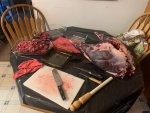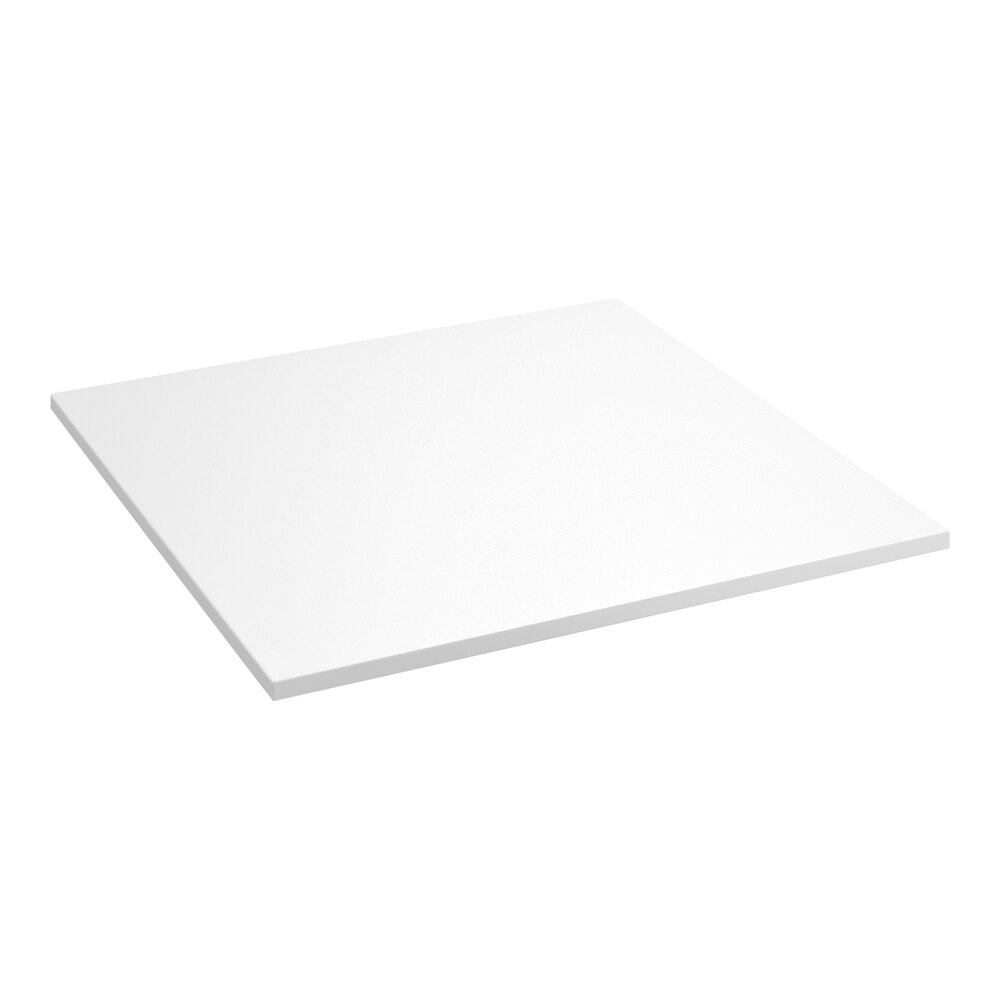Sawfish
Lil-Rokslider
SYSCO also has meat lugs.
Follow along with the video below to see how to install our site as a web app on your home screen.
Note: This feature may not be available in some browsers.
Different than most others above, I wrap mine with Saran Wrap and butcher paper, I get both in industrial size rolls from sams/costco. I find it to be faster than a food saver or bags and I don’t get freezer burn even on meat that gets a few years old.
https://www.butcher-packer.com/Where is everyone buying their meat trays? Looks like Cabela’s used to carry them but not anymore. Amazon are pretty expensive compared to what Cabela’s used to charge.


Figure out a work surface that is the right height to work comfortably, don’t work hunched over. We built a standing height table that has made a big difference.
I use a small (4") very flexible fillet knife and a large stiffer (8") fillet knife" for deboning and muscle group separation, and a 10" chef's knife (slicing steaks and cubing for grind/stew)) when processing. Last year I used a replaceable blade (Tyto style) knife in lieu of the small fillet and that worked well. For the fillet knives I've been using cheaper Rapala brands when WallyWorld has them on sale after fishing season is over. Used to insist on rubber handles but since I've started wearing the heavy black nitrile gloves am not as picky on that end but does make sanitation and clean-up easier.
With any knife - sharpness is often more important than the blade style itself. I find a ceramic "steel" to be the ticket when getting a quick new edge during the cutting and then hone when complete for the next critter that is invited to the processing party.
The large restaurant size white cutting boards from Sam's are great - I cut them in half with a skill-saw to make them a usable size. Process quarters on 1/3 the table, cut meat on other 1/3. bowls on final 1/3. Keep a trash can with a contractor's bag handy for disposing on bones and such. (Most of my critters come out whole on the game cart or quartered bone-in.)
I cover the entire kitchen table with a split contractor's bag for easy clean-up.
5 medium bowls on the edge of the table: loin, steaks, stew, jerky, grind, waste. Kid handles the grinding as we go and we package the other cuts at the end.
A fan in the cutting area seems to keep any flies that find their way into the house off the meat and is a welcome breeze during the job.
We pre-package all meat for our family of 3 with no leftovers. Typically get about 50 meals from an average mule deer and a couple packages of jerky cuts for later processing.
We mix pork fat or a fatty pork shoulder with our grind meat (20%ish). I pick it up year-round and vac seal and freeze ready for use. They are always out when you need it the most.
Double bag and seal contractor bags with zipties when done, keeps odor/flies down in the dumpster when cutting meat on Sunday and trash service comes on Friday.....
I wear out an entry model vac-seal about every 2 years but work them hard through the year. Sometimes it really helps to put meat in bags in the freezer to par-freeze before sealing if the meat is overly juicy. I always pay attention to flattening the packages of any cut/grind when sealing - makes stacking efficiently in the freezer much easier.
Kid pre-labels packages for each cut of meat with year-who-species-cut (e.g. 2019 CTC Deer Loin). Make sure the kid grabs a Sharpie and not black washable Crayola marker - mystery meat for the next year if you fail in that little experiment.
Filled tags get put into a Ziploc securely taped inside of the freezer.
Process 2 deer and usually a cow elk per year with that rig.
As others have said - the grinder is key. Have been too cheap to buy a high quality grinder so always pick up smaller $5 garage sale grinders (1970's Oster models seem the most durable) and have an extra in stock when one craps out. (Burnt up the wife's super-duper Kitchen-Aid mixer one year with the grinder attachment - replacing that cost more than my Kifaru...…)
Figure out a work surface that is the right height to work comfortably, don’t work hunched over. We built a standing height table that has made a big difference.
